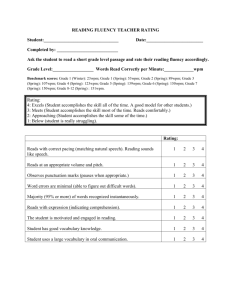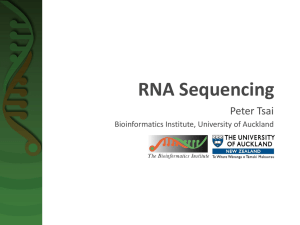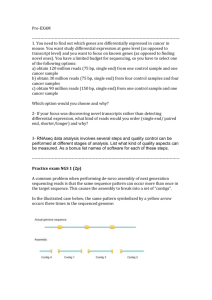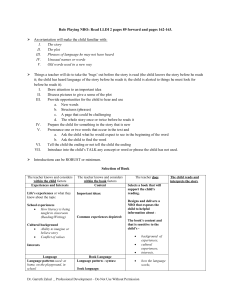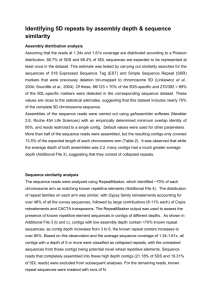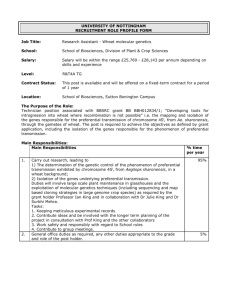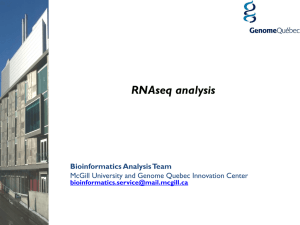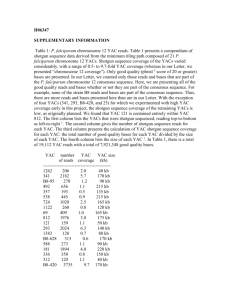A Genome-Wide Survey of Mutations Induced by Ionising Radiation
advertisement
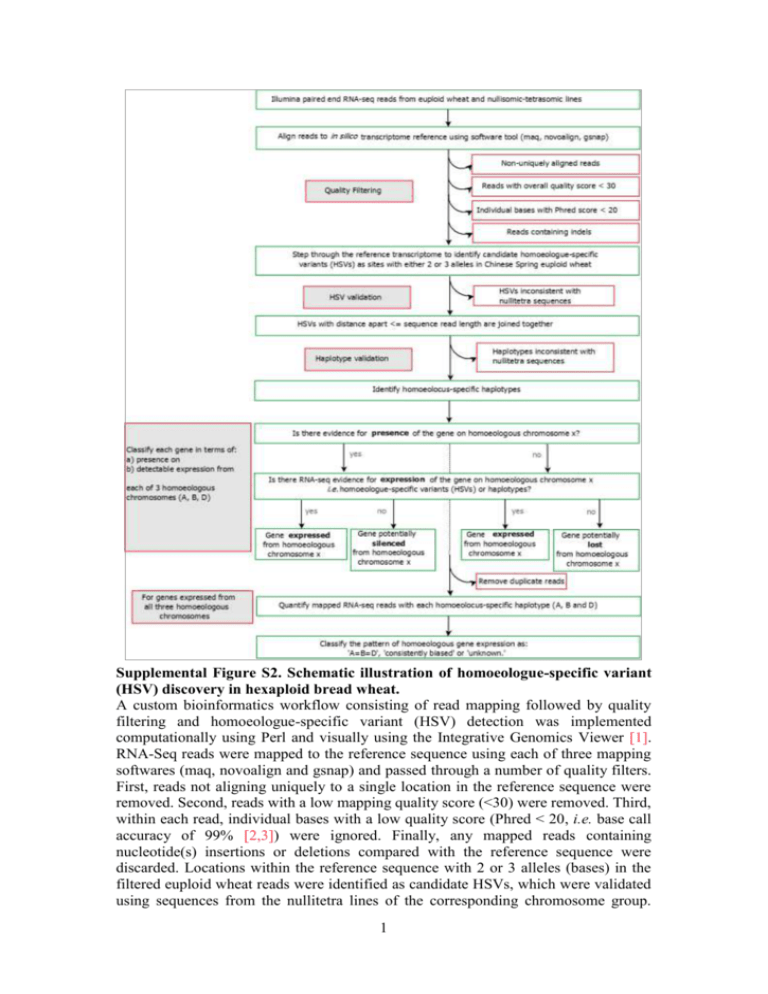
Supplemental Figure S2. Schematic illustration of homoeologue-specific variant
(HSV) discovery in hexaploid bread wheat.
A custom bioinformatics workflow consisting of read mapping followed by quality
filtering and homoeologue-specific variant (HSV) detection was implemented
computationally using Perl and visually using the Integrative Genomics Viewer [1].
RNA-Seq reads were mapped to the reference sequence using each of three mapping
softwares (maq, novoalign and gsnap) and passed through a number of quality filters.
First, reads not aligning uniquely to a single location in the reference sequence were
removed. Second, reads with a low mapping quality score (<30) were removed. Third,
within each read, individual bases with a low quality score (Phred < 20, i.e. base call
accuracy of 99% [2,3]) were ignored. Finally, any mapped reads containing
nucleotide(s) insertions or deletions compared with the reference sequence were
discarded. Locations within the reference sequence with 2 or 3 alleles (bases) in the
filtered euploid wheat reads were identified as candidate HSVs, which were validated
using sequences from the nullitetra lines of the corresponding chromosome group.
1
Two-allele and three-allele HSVs were confirmed where the allele diagnostic (i.e.,
specific) for a particular homoeologue was present in all nullitetra lines except for
those lacking the corresponding homoeologous chromosome. HSVs co-located within
a region of sequence less than the length of individual sequence reads (51 base pairs)
were combined to produce haplotypes and the homoeolocus-specificity of haplotypes
was confirmed. Deletion bin-mapping data [4,5] and chromosome arm-specific
assemblies for group 1 homoeologues [6] were used together with our RNA-Seq
datasets to infer the presence and expression of each gene across the three possible
homoeologous chromosomes (A, B and D). For genes unequivocally expressed from
all three homoeologous chromosomes, duplicate reads were removed and the
homoeolocus specific haplotypes were quantified. The expression pattern could be
classified as either equal expression from all three homoeoloci ('A=B=D'), differential
expression of homoeoloci ('consistently biased') or as 'unknown' where no consistent
and significant pattern was detected.
1. Robinson JT, Thorvaldsdóttir H, Winckler W, Guttman M, Lander ES, Getz
G, Mesirov JP: Integrative genomics viewer. Nat Biotech 2011, 29:24–6.
2. Li H, Handsaker B, Wysoker A, Fennell T, Ruan J, Homer N, Marth G,
Abecasis G, Durbin R: The Sequence Alignment/Map format and
SAMtools. Bioinformatics 2009, 25: 2078-2079.
3. Cock PJA, Fields CJ, Goto N, Heuer ML, Rice PM: The Sanger FASTQ file
format for sequences with quality scores, and the Solexa/Illumina FASTQ
variants. Nucleic Acids Res. 2010, 38: 1767–1771.
4. Qi L, Echalier B, Friebe B, Gill BS: Molecular characterization of a set of
wheat deletion stocks for use in chromosome bin mapping of ESTs. Funct
Integr Genomics 2003, 3:39–55.
5. Qi LL, Echalier B, Chao S, Lazo GR, Butler GE, Anderson OD, Akhunov ED,
Dvorák J, Linkiewicz AM, Ratnasiri A, Dubcovsky J, Bermudez-Kandianis
CE, Greene RA, Kantety R, La Rota CM, Munkvold JD, Sorrells SF, Sorrells
ME, Dilbirligi M, Sidhu D, Erayman M, Randhawa HS, Sandhu D, Bondareva
SN, Gill KS, Mahmoud AA, Ma X-F, Miftahudin, Gustafson JP, Conley EJ, et
al.: A chromosome bin map of 16,000 expressed sequence tag loci and
distribution of genes among the three genomes of polyploid wheat.
Genetics 2004, 168:701–12.
6. Wicker T, Mayer KFX, Gundlach H, Martis M, Steuernagel B, Scholz U,
Simková H, Kubaláková M, Choulet F, Taudien S, Platzer M, Feuillet C,
Fahima T, Budak H, Dolezel J, Keller B, Stein N: Frequent gene movement
and pseudogene evolution is common to the large and complex genomes of
wheat, barley, and their relatives. Plant Cell 2011, 23:1706–18.
2



